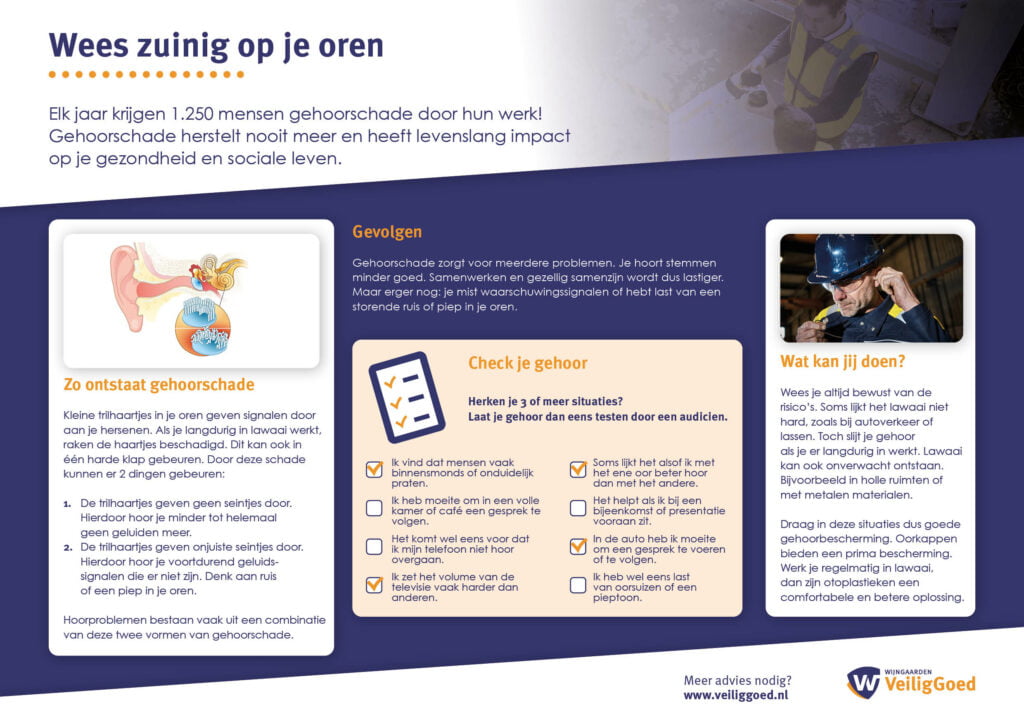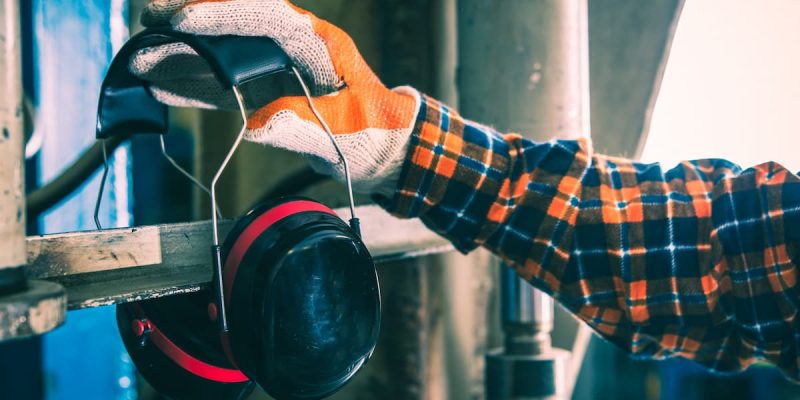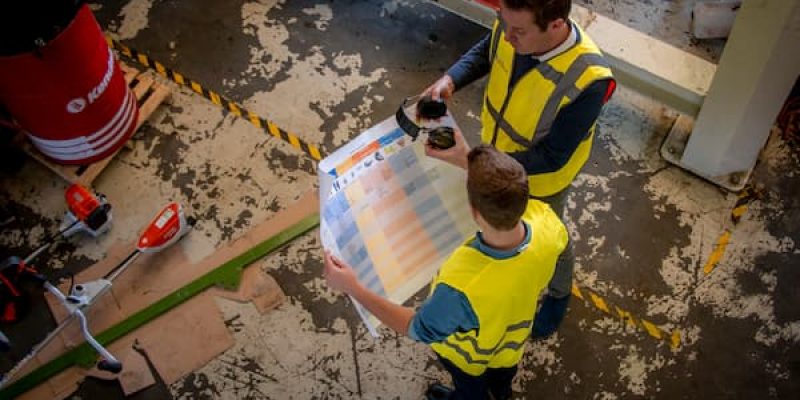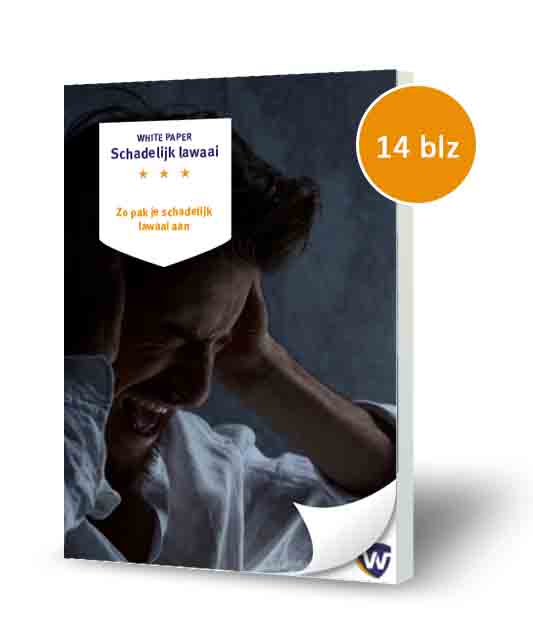
Free poster
Prevent hearing damage at work
At which mail address would you like to receive the E-paper?
"*" indicates required fields
Hearing damage is the most reported occupational disease. Just in construction, one in five construction workers suffers from hearing damage. Noise not only causes deafness, but it could also cause tinnitus.
Not only loud noises (peak exposure) are harmful to your hearing, but mainly prolonged exposure to single-toned noise is harmful. The so-called chronical exposure to noise in particular, causes problems in the long term.
Examples of everyday noises with the time factor after which hearing damage occurs:
| Decibel | Duration | Machine |
| 110 dB | directly | Stud gun, circular saw, electric hand drill |
| 100 dB | 5 min | Grinder, leaf blower, motorcycling (100 km/h) |
| 90 dB | 1 hour | Drum kit, cutting torch, bulldozer |
| 80 dB | 8 hour | Vacuum cleaner, city traffic |
| 70 dB | >8 hour | Mixer, razor, car, busy office |
| 60 dB | – | Piano playing, conversation, washing machine |
Hearing loss also involves consequences for the alertness of employees and thus the safety in the workplace. There will be 25% more risk of an accident when you suffer from hearing loss. This is because employees are less able to hear vehicles and other signals. Even if there is no hearing damage yet, noises could disrupt the production and cooperation. Therefore, it is recommended to address annoying and harmful noise as firmly as possible.

In addition to the primary steps in the AH-strategy, PPE usually remains required. Relevant products that we can provide, are:
Hearing damage often takes place unnoticed. Therefore, it is important to make employees aware of the risks. You could, for instance, present the table above and have them measure the noise in their workplace by use of an app. That will immediately make them do their work more consciously. Our PPE-consultants can make a contribution by providing a (digital) SHE meeting.
In practice, it appears there is little support for the use of hearing protection. It is often experienced as uncomfortable. Therefore, it is important to give thought to the wearing comfort. The different types of hearing protection each have their own comfort.

Selecting effective PPE requires proper consideration: how loud is the noise? For how long will the hearing protection be worn? Is a lot of communication required? Taking account of these aspects, will make the choice a lot more effective!
Our PPE-consultants are familiar with recent laws and regulations. By going through the risks, together with you, we can help you decide about hearing protection.
Our advisors are happy to help you or make an appointment if you wish.
Phone: +31 184 434 455
Mail: info@veiliggoed.nl
The inventory of risks at function level. By means of an advisory report and a PPE-matrix, the employer will have an overview of the required protection measures. More information about the PPE-scan.
Trapezium 400
3364 DL Sliedrecht

"*" indicates required fields

"*" indicates required fields